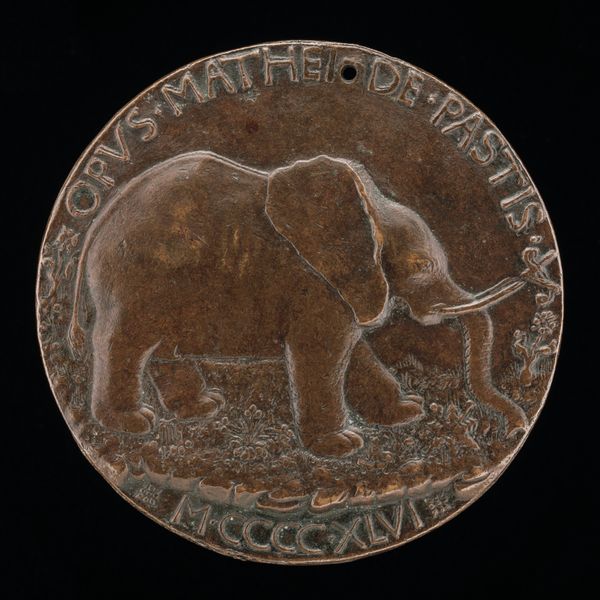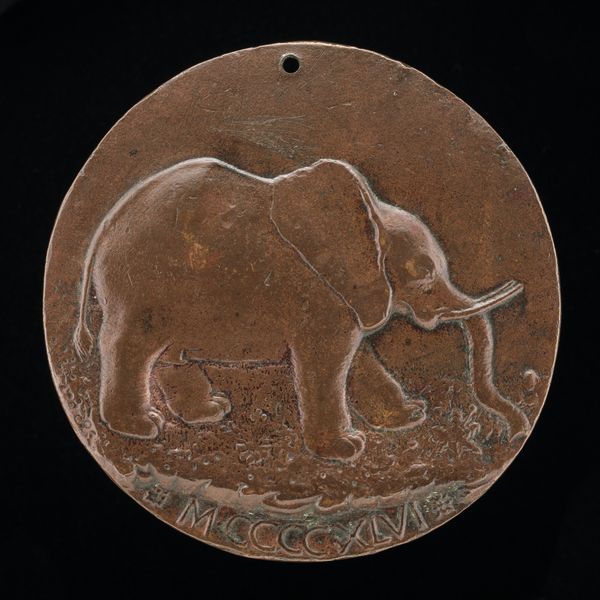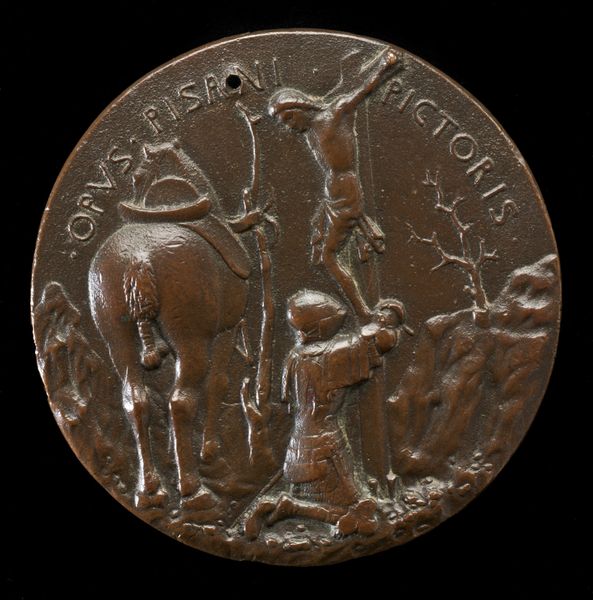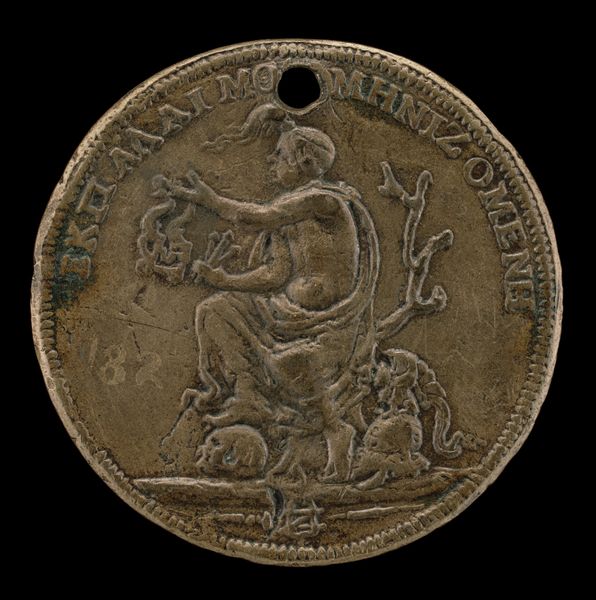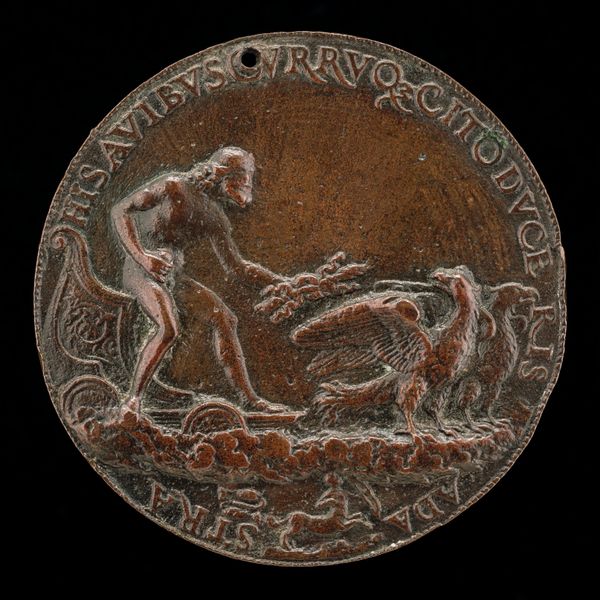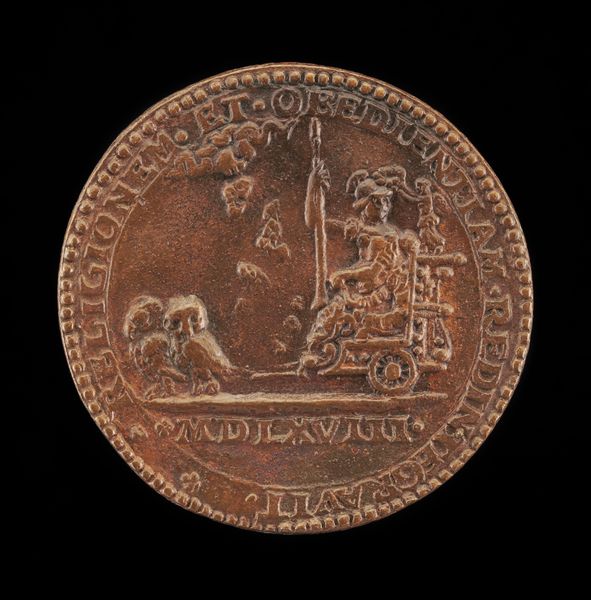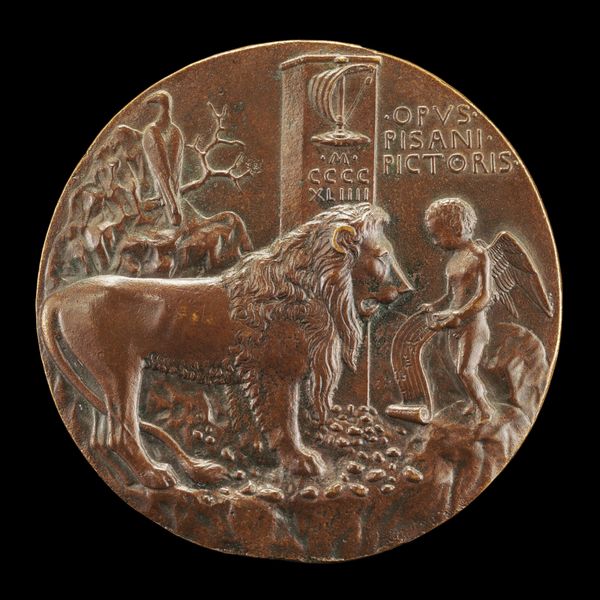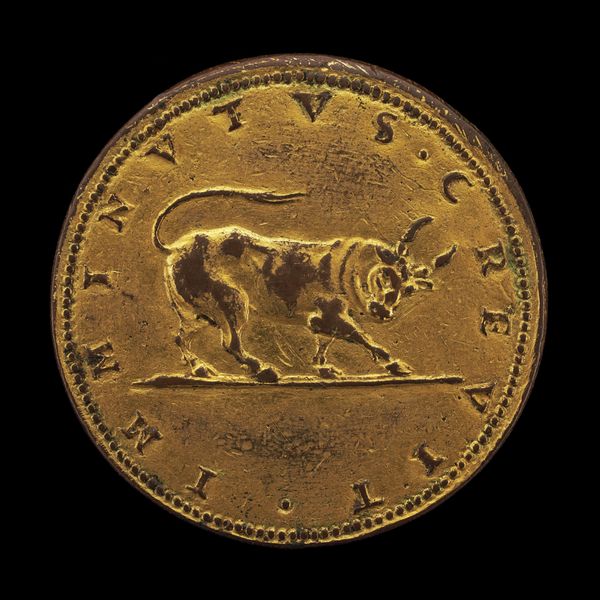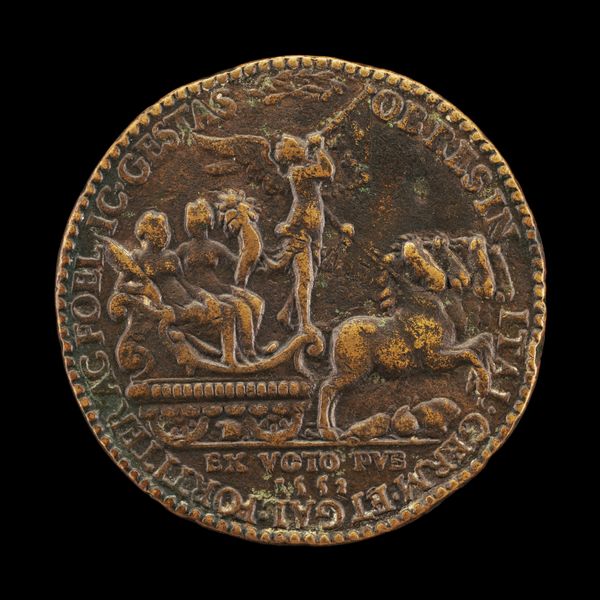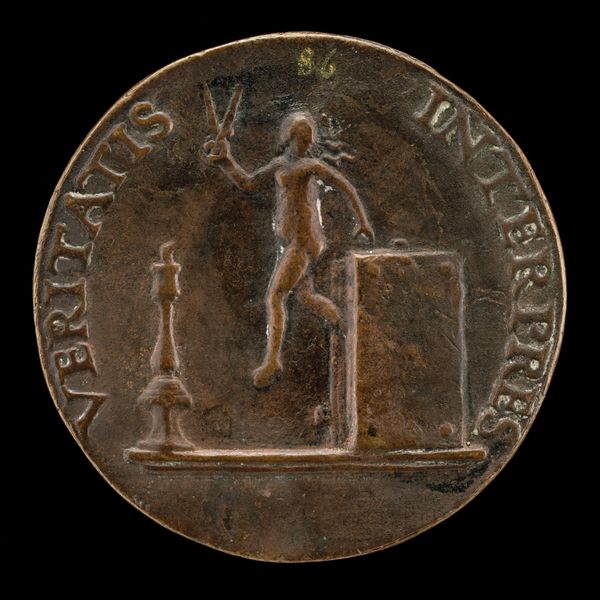![The Malatesta Elephant in a Meadow [reverse] by Matteo de' Pasti](/_next/image?url=https%3A%2F%2Fd2w8kbdekdi1gv.cloudfront.net%2FeyJidWNrZXQiOiAiYXJ0ZXJhLWltYWdlcy1idWNrZXQiLCAia2V5IjogImFydHdvcmtzL2ExNjdjNGQzLTlkZmItNDY4My05MTRhLWRlZmVhMWE2ZjlhYS9hMTY3YzRkMy05ZGZiLTQ2ODMtOTE0YS1kZWZlYTFhNmY5YWFfZnVsbC5qcGciLCAiZWRpdHMiOiB7InJlc2l6ZSI6IHsid2lkdGgiOiAxOTIwLCAiaGVpZ2h0IjogMTkyMCwgImZpdCI6ICJpbnNpZGUifX19&w=3840&q=75)
relief, bronze, sculpture
#
portrait
#
medal
#
sculpture
#
relief
#
bronze
#
figuration
#
sculpture
#
italian-renaissance
Dimensions: overall (diameter): 8.39 cm (3 5/16 in.) gross weight: 285.07 gr (0.628 lb.) axis: 12:00
Copyright: National Gallery of Art: CC0 1.0
This bronze medal, depicting an elephant in a meadow, was made by Matteo de' Pasti in 1446. Pasti was working in a pivotal moment for the medium. Cast bronze medallions like this one were not precisely ‘art’ but existed in the same social sphere. The process begins with a wax model, carefully carved with all the details in relief. This is then invested in a mold, melted out, and molten bronze poured in, a process with ancient roots. After cooling, the mold is broken and the medallion revealed, ready for chasing and finishing. But why an elephant? The image refers to the animal owned by the patron, Sigismondo Pandolfo Malatesta, a powerful Renaissance lord. In commissioning such an object, Malatesta was clearly trying to burnish his image, connecting himself with the ancient world, where the elephant was a symbol of power and wisdom. The bronze lends the image gravitas, permanence, and value. These medals were not mere trinkets, but markers of social status.
Comments
No comments
Be the first to comment and join the conversation on the ultimate creative platform.
